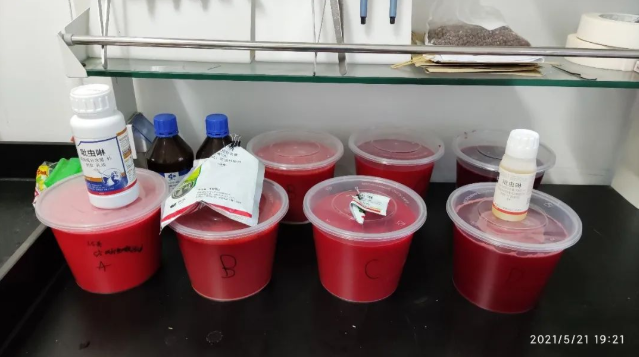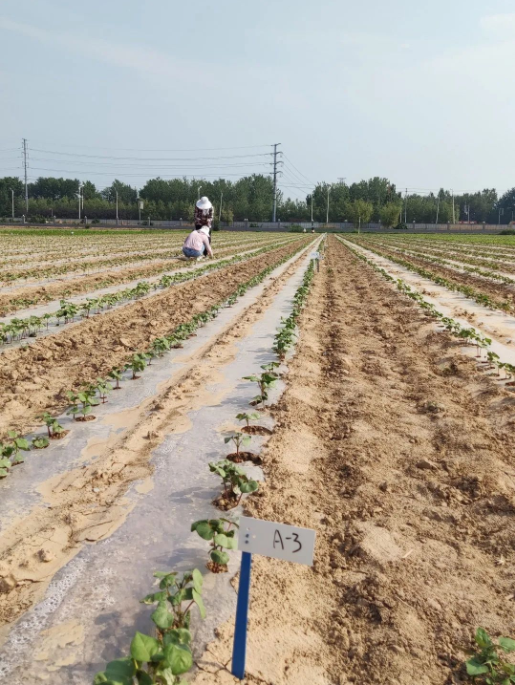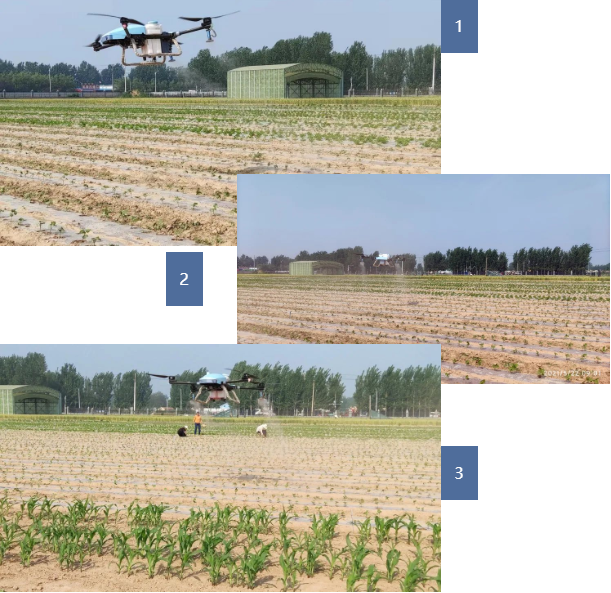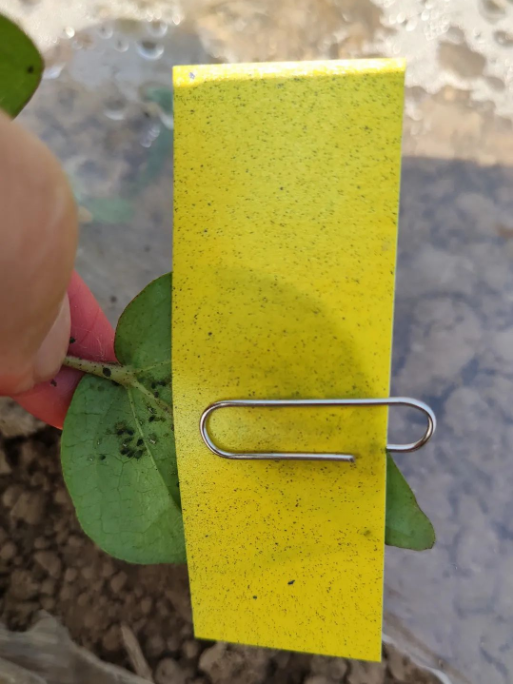What dosage form should I choose for cotton drone plant protection?
Oct 11 , 2022Test Purposes
In order to clarify the control effect and safety of different formulations of imidacloprid sprayed by EAVISION plant protection drone on aphids in cotton seedling stage, this experiment was carried out.
Test Conditions
2.1 Selection of test objects, crops and varieties

Cotton seedling stage aphids. The experimental crop is cotton, and the variety is Lumian 1161.
2.2 Test drug and test group number
| Handling number | Agrochemical | Dosage | Active Ingredients | Effective Weight |
| Dosage: ml (g)/acre | ||||
| 1 | 5% Imidacloprid EC | 56 | Imidacloprid | 42 |
| 2 | 10% Imidacloprid WP | 28 | Imidacloprid | 42 |
| 3 | 70% imidacloprid water dispersible granules | 4 | Imidacloprid | 42 |
| 4 | 200 g/L imidacloprid solution | 14 | Imidacloprid | 42 |
| 5 | Blank | Clear water (1L/acre) | - | - |
2.3 Environmental or facility cultivation conditions
The experiment was set up in Linqing City, Shandong Province, at the Experimental Station of Economic Crops Research Institute of Shandong Academy of Agricultural Sciences. Cotton was sown on April 25, 2021. During the experiment, the cotton was in the seedling stage and was growing well. The field area was about 3192m2, surrounded by other cotton fields.
Trial Design and Arrangement
3.1 Test method
According to 4 different formulations, 4 chemical treatments (5% imidacloprid EC, 10% imidacloprid wettable powder, 70% imidacloprid water dispersible granules, 200g·L-1 imidacloprid soluble agent and 1 clear water control treatment, among which 4 treatments The dosage of the active ingredient of imidacloprid treated with the same medicine was 42g·hm-2, and the dosage of allura red was 450g·hm-2.
During the test, the weather was sunny and there was no extreme weather, which could ensure the validity of the data.


3.2 Application method
3.2.1 How to use
Spray treatment at the peak of aphid occurrence in cotton seedling stage.
3.2.2 Model and parameters of the UAV under test
Tested plant protection drone model: E-A2021
parameter:
1 L of liquid medicine per 667 m2
Spray width: 4 m
Flight speed: 5.5 m·s-1
The flight height is from the top of the cotton canopy: 1.5 m
Droplet size: 40 μm
3.2.3 Application time and frequency
The application time is the morning of May 22, 2021, with one application. At this time, cotton is at the peak of aphid occurrence in the seedling stage.
Results and Analysis
4.1 Droplet deposition distribution of different dosage forms
| Content | Front of Leaf | Back of Leaf | ||
| Depositis/cm2 | Significant Difference(5%) | Droplet Density | Significant Difference(5%) | |
| 1 | 167.18 | a | 132.86 | a |
| 2 | 134.11 | a | 98.43 | a |
| 3 | 153.41 | a | 92.8 | a |
| 4 | 141.55 | a | 94.31 | a |
The droplet density of the four formulations on the front of the leaves was the largest in emulsifiable concentrate, by water dispersible granules and soluble formulations, and wettable powders had the smallest droplet density, but there was no significant difference between the formulations. The density of droplets on the back of the leaves of EC was higher than that of other formulations, but the difference did not reach a significant level.

4.2 Liquid deposition amount of different dosage forms
| Content | Front of Leaf | Back of Leaf | ||
| Liquid deposition amount per unit area | Significant Difference(5%) | Liquid deposition amount per unit area | Significant Difference(5%) | |
| 1 | 0.059 | a | 132.86 | a |
| 2 | 0.024 | a | 98.43 | b |
| 3 | 0.049 | ab | 92.8 | a |
| 4 | 0.051 | ab | 94.31 | a |
In terms of the deposition amount on the front of leaves, imidacloprid EC > soluble agent > water dispersible granule > WP, the deposition amount of EC was the largest, which was significantly higher than that of WP, and there was no significant difference between the deposition amount and the other two formulations. The distribution of the deposition amount on the back of the leaf is consistent with that on the front of the leaf.
4.3 Analysis of pesticide utilization rate of different formulations
| Content | Pesticide utilization rate(%) | Significant Difference(5%) |
| 2 | 4.14 | b |
| 4 | 6.92 | a |
From the pesticide utilization rate of the four formulations (Table 3), water dispersible granules have the highest utilization rate of pesticides, by soluble formulations and emulsifiable concentrates, and wettable powder formulations have the lowest pesticide utilization rate, which is significantly lower than that of water dispersible granules and soluble formulations. agent.
4.4 Field control effect analysis of different formulations
| Content | 1 day after | 3 day after | 7 day after | ||||||
| Prevention effect(%) | Significant Difference(5%) | Significant Difference(1%) | Prevention effect(%) | Significant Difference(5%) | Significant Difference(1%) | Prevention effect(%) | Significant Difference(1%) | Significant Difference(1%) | |
| 1 | 63.4 | a | AB | 79.18 | a | A | 73.16 | a | AB |
| 2 | 52.59 | b | B | 66.98 | b | B | 58.73 | b | B |
| 3 | 65.34 | a | A | 80.27 | a | A | 71.32 | a | AB |
| 4 | 68.86 | a | A | 83.07 | a | A | 76.05 | a | A |
The control effects of plant protection drones sprayed with different formulations of imidacloprid were quite different (see Table 4). On the 1st day and 3rd day after the drug, the solution and water dispersible granules have the better control effect, and the wettable powder is the lowest, and it has reached a very significant level with the first two dosage forms. Seven days after the treatment, the control effect of each dosage form decreased, the solution, water dispersible granule and EC were maintained at more than 70%, while the wettable powder control effect was only 58.73%, and the water dispersible granule was extremely significant.
Conclusion
The droplet density, droplet coverage, liquid deposition per unit area, and pesticide utilization rate of four common formulations of imidacloprid on cotton leaves were compared through the experiment of plant protection drone spraying at room temperature to prevent and control aphids in cotton fields. and other parameters and field control effect. The results showed that: under normal temperature mist mist plant protection drone spraying, the droplet density and droplet coverage of the four formulations of imidacloprid were not significantly different; EC, water dispersible granules and dispersible granules had more liquid deposition per unit area. , The utilization rate of pesticides is high, and the field control effect on aphids in the seedling stage of cotton fields is better, and it is more suitable for the application of drones for plant protection at room temperature.